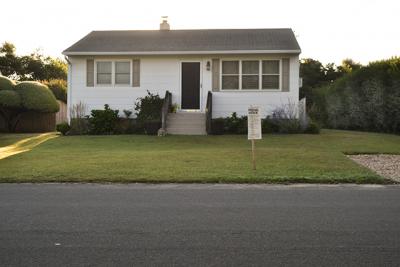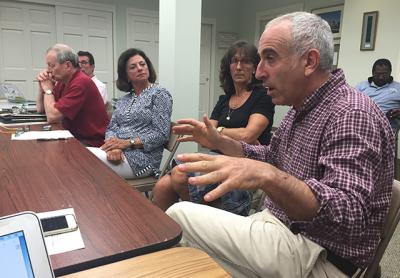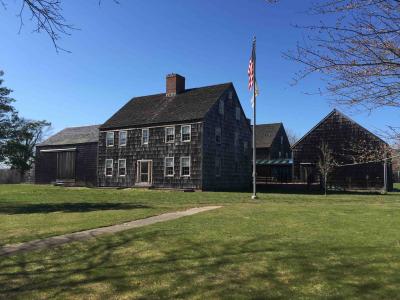‘Pyramid’ Draws Opposition
‘Pyramid’ Draws Opposition

About a dozen Montauk residents showed up for a hearing before the East Hampton Town Zoning Board of Appeals Tuesday night when a proposed new house at 6 Prentice Place in the Ditch Plain neighborhood of the hamlet was on the agenda. Two residents spoke in opposition to the application.
The proposal is to tear down a modest house on the narrow 7,320-square-foot lot and replace it with a 2,474-square-foot, two-story one. Variances from the town’s pyramid law, designed to prevent structures from looming over neighboring properties, would be required.
Earlier this year Rob Connolly, an attorney with the Farrell Fritz firm, represented the owner of the property, Camellia Weinstein, before the board, presenting a larger house, at over 2,800 square feet. It would have required numerous variances, and it was clear Ms. Weinstein would have to scale back her plans to get an okay.
Eric Bregman, another attorney with Farrell Fritz, made the presentation Tuesday. “We listened to what you said,” he said. All the applications for variances, except the two regarding the pyramid law, were removed. Mr. Bregman also said the request for dormers on the house rather than its roofline triggered pyramid relief. He said the dormers were necessary to “make the house livable,” explaining that the second floor bathroom and closet would not be usable if the dormers did not push out beyond the roofline. He said a neighboring two-story house to the north would also require major pyramid variances if built today, as well as side-yard setback variances.
Maria Erwin, who said she was the neighbor to the south, handed the board a petition against the proposal. “Everybody in Ditch Plain is against this,” she said.
Gertrude Murphy, who lives near downtown Montauk, also spoke against the project, and complained about the general explosion of large houses in the hamlet. She said they were “seldom used, grandiose structures. Many of these megaliths are empty for most of the year.”
In that connection, the chairman, John Whelan, told the assembled to watch for a public hearing to be held by the East Hampton Town Board in coming weeks on the relationship of the size of houses to the lots they are on.
David Lys asked Tyler Borsack, of the Planning Department staff, if there were examples of approved pyramid variances at Ditch. The answer was that there were a few. The board has 62 days to make a decision.
The board also has 62 days to rule on an application for a wetlands permit at 56 Hedges Bank Drive. A house there burned down last year and has since been rebuilt. The fire drew the attention of the Federal Bureau of Investigation because Merle Hoffman, the property owner, is a women’s rights activist and writer who founded one of the nation’s first abortion clinics.
At issue for the Z.B.A. were steps down to the beach and a small deck, which apparently had been built without permits.
Laurie Wiltshire of Land Planning Services told the board Ms. Hoffman was amenable to reconfiguring the steps in a straight line as opposed to a zigzag, as recommended by the Planning Department, and the board asked that she remove the deck.
With Roy Dalene needing the night off, the board was down to three members because the town board has yet to replace Lee White, who retired several weeks ago.



